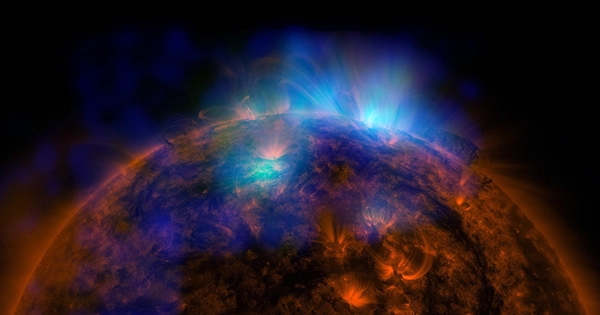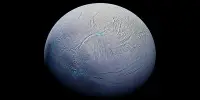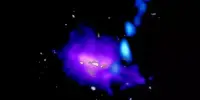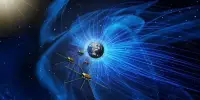The most massive stars in the universe die in supernovae, which are tremendous explosions that rip them apart. But for lesser-known stars, their lives finish with a whimper rather than a bang. Stars like our Sun will eventually become extremely hot white dwarfs, losing most of their mass and gradually diminishing heat over billions of years.
We still don’t know a lot about this change and stellar evolution in general. As a result, researchers are interested in detecting young white dwarfs, particularly when they are found in star clusters. This enables them to better predict the initial-final mass relation, which is critical in understanding stars. Astronomers have now discovered an ideal candidate for this.
The white dwarf in issue is in the heart of a planetary nebula, which is the cloud of gas and dust that the star emits near the end of its life. It’s also a member of the open star cluster M37. It had a mass around 85% that of our Sun and a temperature 15 times that of our star. It’s also young; it only became a white dwarf a few hundred thousand years ago.

The crew had a reasonable estimate of its final mass, but what about its initial mass? The team deduced this from the white dwarf’s characteristics, the age of the cluster, and the mass of the planetary nebula that was left behind.
When a star, such as the Sun, runs out of hydrogen to fuse in its core, it collapses and the core compresses, becoming hot enough to fuse helium. The star’s outer layers are pushed outward, and it swells into a red giant. These layers are weakly connected and start to spread. The core will eventually run out of helium, collapse into a white dwarf, and push the layers out. That’s a planetary nebula, so named since the original finding resembled a planet.
Only three planetary nebulae are known to exist within known star clusters, and they are valuable because all of the stars in them were born at the same moment. Stars form from gas clouds using the initial mass function; there are a few large stars and many little ones. The larger stars also deplete their nuclear fuel faster, leaving the smaller stars behind. This enabled researchers to figure out what the cluster was like providing unique insights into the evolution of stars like the Sun.
“Data from very young white dwarfs are particularly valuable because these are the central stars of planetary nebulae,” stated Professor Klaus Werner of the University of Tübingen in a statement. “None of their central stars had been studied before because they are all very distant and faint.”
The center star of a planetary nebula in an open star cluster has been studied for the first time by experts. The star must have weighed around 2.8 times that of our Sun before shedding a significant portion of its post-red giant phase. “So the star has lost 70 percent of its matter during its lifetime,” Werner explained.
Another sign that the white dwarf is still in its early stages is that its layers are still settling. On its surface, carbon and helium can be detected. The team estimates that once the carbon has gone into the interior and become heavier than helium, this object will shortly be a helium white dwarf.
















